The Advanced Composition and Specifications of Glass Signage
Discover the unmatched elegance and versatility of glass in the world of signage. This blog unravels the unique advantages of glass over conventional materials, revealing how its clarity, durability, and design flexibility can transform any brand's visual presence. Dive into the world of glass signage, where every sign is not just a display, but a statement of sophistication and style.
Check out the latest glass signage we've created for Memorial Hearing, Houston, Texas a sleek, modern, and a real eye-catcher. The design features beautifully etched lettering on clear glass, offering durability and versatility for any location. It's simple yet striking, perfectly capturing its vibe.
Ordos Wealth Management glass signage embodies sleek elegance. Crafted from high-quality glass with crisp, bold acrylic lettering, it reflects the company's commitment to transparency and professionalism. Its minimalistic design ensures visibility and sophistication, perfectly representing the brand's excellence in wealth management.
Glass Material Specifications
- Temperature Resilience - Glass signs, especially when tempered, exhibit excellent resilience across a wide temperature range, handling up to 300°C (572°F) and remaining stable down to -20°C (-4°F).
- Breakage Data and Thickness Considerations :
- Tempered glass is four to five times stronger than standard glass and less likely to break. When it does break, it crumbles into small granular chunks instead of splintering into jagged shards, which is safer.
- The recommended thickness for glass signs varies based on size and application. For smaller signs, 6mm (about 1/4 inch) is often sufficient. Larger signs, particularly those outdoors, may require 10mm (about 3/8 inch) or more to ensure stability and resistance to breakage.
- Longevity of Glass Signs in Outdoor Environments :
- In a temperate climate like Houston, TX, a well-made glass sign can last many years without significant degradation.
- Direct sunlight can be mitigated with UV treatments to the glass, which help prevent fading and maintain the integrity of the sign over time.
Difference Between Low-Iron Glass and Clear Glass
- Low-Iron Glass- Low-iron glass is characterized by its exceptionally clear, almost crystal-like appearance, due to its reduced iron content. This composition not only minimizes the greenish tint visible in standard glass but also ensures superior color fidelity and light transmission. It's ideal for applications where true color perception and maximum clarity are essential, such as high-end retail displays, architectural features, and areas where the glass's edge visibility is crucial. However, these benefits come at a higher cost compared to standard glass.
- Clear Glass- Standard clear glass, or float glass, contains a higher iron content, imparting a slight greenish tint, particularly noticeable in thicker cuts or at the edges. While this tint can affect color perception slightly, clear glass remains a popular, cost-effective choice for a wide range of applications. It's commonly used in windows, picture frames, and everyday glassware, where the slight color distortion is not a critical concern. Its affordability and wide availability make it suitable for general use.
Material Pricing: Glass vs. Other Options
- Cost Comparison:
- Glass, especially tempered or laminated varieties, tends to be more expensive than materials like acrylic or metal on a per-unit basis.
- The cost is justified by its durability, aesthetic appeal, and the low maintenance it requires over time.
Comparing the Robustness of Glass with Other Signage Materials
- Strength and Safety- Tempered glass is four to five times stronger than standard glass. In the unlikely event of breakage, it shatters into small, harmless pieces, unlike the dangerous shards of standard glass.
- Statistics on Longevity- A study shows that tempered glass signs can last up to three times longer than acrylic or plastic signs in similar outdoor conditions, significantly reducing replacement costs over time.
Glass Signage: Unrivaled Customization and Design Options
- Unmatched Customization- Glass allows for unique design opportunities, including intricate etchings and shapes that materials like metal or stone can't easily replicate.
- Painting Techniques- Back-painting techniques on glass provide vibrant, fade-resistant colors, making it ideal for brand-centric designs.
Size limitation on Glass Signs
- The size of glass signs is generally limited by practical considerations such as transportation and installation. Extremely large signs may require joining multiple glass panels.
- For large outdoor signs, increased thickness and reinforced mounting systems are necessary to ensure stability and safety.
- While glass is suitable for both indoor and outdoor use, its best application depends on the specific environment. In outdoor settings with direct sunlight, like Houston, TX, laminated or UV-treated glass is recommended to prevent discoloration and maintain longevity.
The Distinctive Visual Appeal of Glass in Signage
- Clarity and Brilliance- The transparency of glass offer a visual clarity that acrylic or metal signs cannot match, enhancing brand visibility and appeal.
- Color Vibrancy- Using UV-cured inks for printing glass results in more vivid and enduring colors compared to other materials, essential for maintaining brand consistency and recognition. We recommend checking out 3M's UV Ink 9800 series if you are looking for UV-cured inks.
Our Take Away
Opting for glass signage offers a blend of elegance, durability, and versatility that can significantly elevate a brand's presence. These signs are not just aesthetically appealing but also a wise long-term investment, combining clarity and resilience with creative design possibilities. For businesses seeking to make a sophisticated and lasting impression, glass signage emerges as an unparalleled choice.


